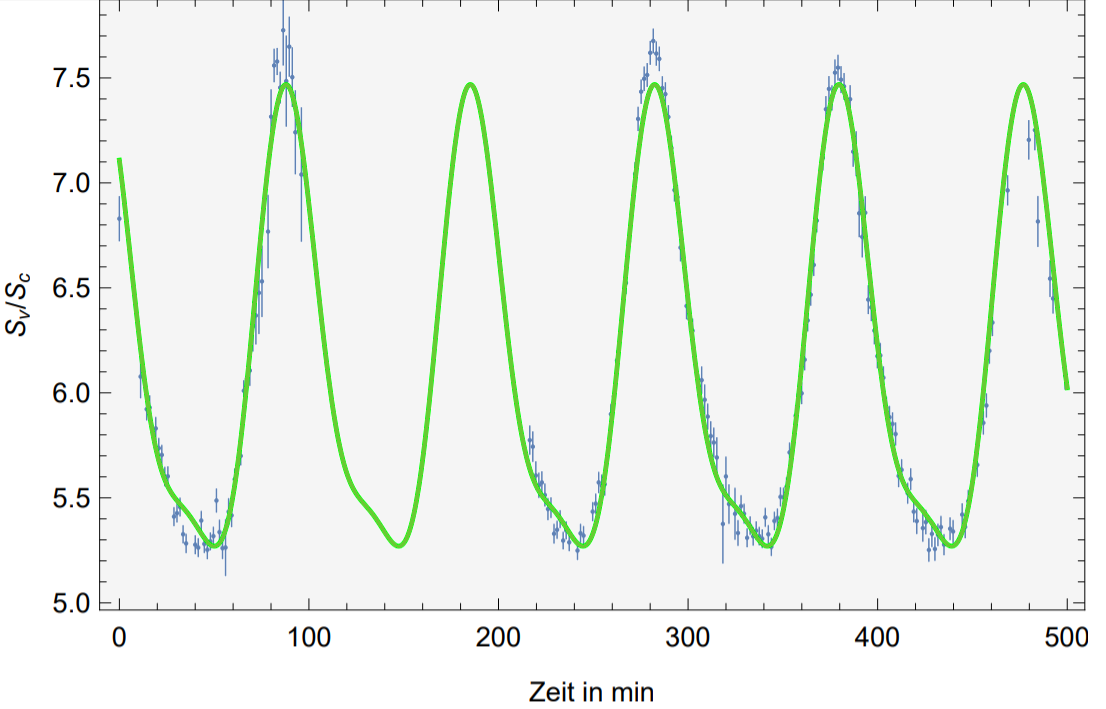Thierry Kaldenbach & Carl Georg Boos
Thanks to the Fortgeschrittenen Praktikum we were able to oberserve variable stars through a night.
The chosen star NP-Lyn is located in the Lynx constellation. The observation was done the night of the 20th January, 2020. Due to many clouds the telescope shut down for an hour and a half, so you can see a gap in the data. That gap though does not interfere with the analysis and still leads to accurate computation of the period.

In the picture above you can see the raw footage of the sky. This is already altered by the program Muniwin, which is used to compute Photometry. NP-Lyn is marked as red, the comparison ctars as green (to determine the differential magnitude) and the check stars as blue (to verify that the comparison stars are no variable stars themselves).
Through differential photometry the light curve was computed (plot on the right). You can also see a fitted finite Fourier-Series to determine the period of the changing star’s radiant flux ratio. Through the high frequency, the missing data does not really matter – we computed a periodicity of 97.235 minutes, which is pretty close to actual, professional measures of 97.561 minutes.
Source: J. D. Hartman et. al.: HAT-P-32b and HAT-P-33b: two highly inflated hot Jupiters transiting high-jitter stars. In The Astrophysical Journal, 3.11.2011

